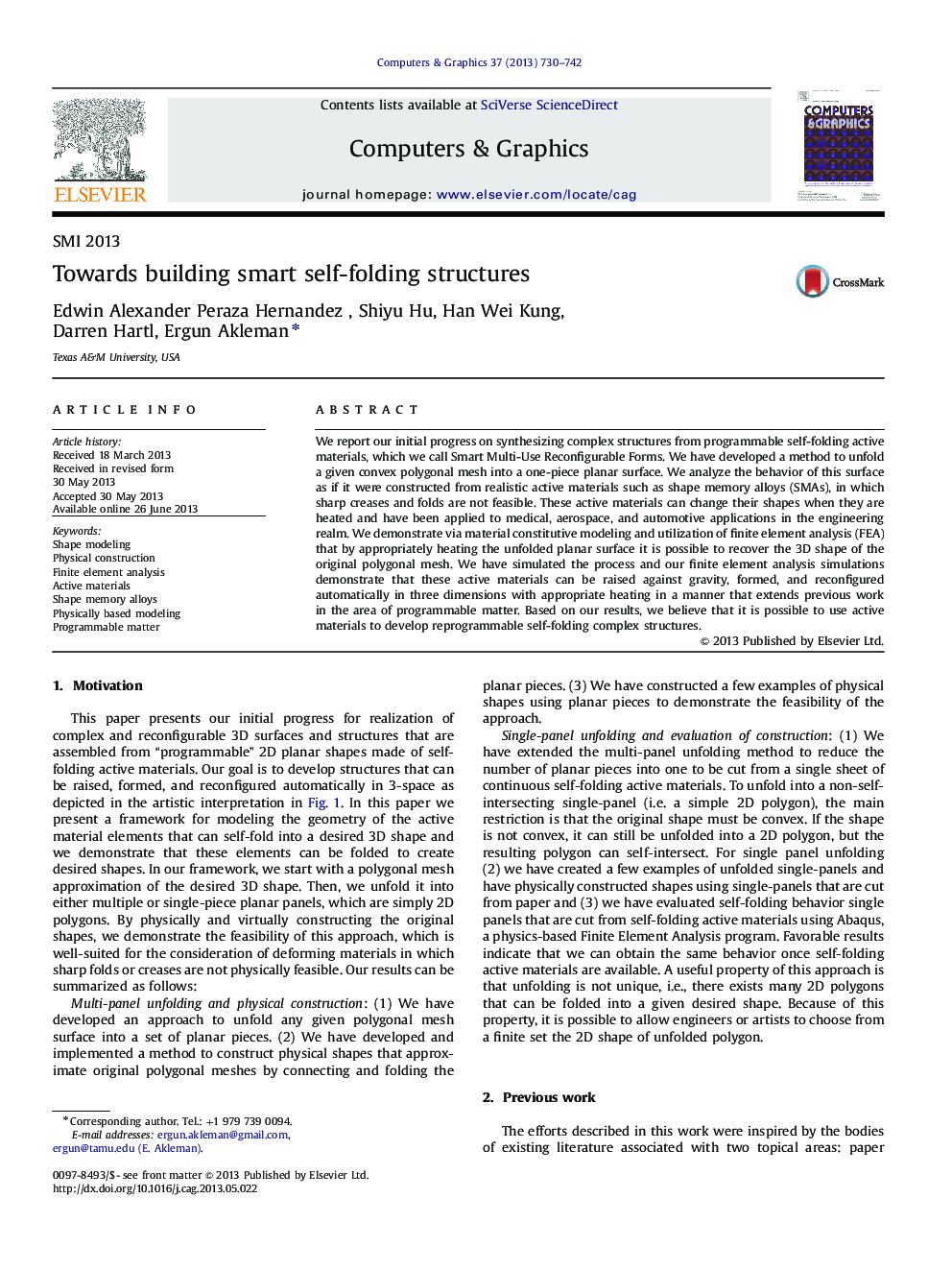| Article ID | Journal | Published Year | Pages | File Type |
|---|---|---|---|---|
| 441981 | Computers & Graphics | 2013 | 13 Pages |
•We have developed and implemented a method to construct physical shapes that approximate original polygonal meshes.•We have analyzed the behavior of surfaces as if they were constructed from shape memory alloys (SMAs).•We have demonstrated that SMA shapes can be raised against gravity, formed, and reconfigured automatically in 3D with appropriate heating.
We report our initial progress on synthesizing complex structures from programmable self-folding active materials, which we call Smart Multi-Use Reconfigurable Forms. We have developed a method to unfold a given convex polygonal mesh into a one-piece planar surface. We analyze the behavior of this surface as if it were constructed from realistic active materials such as shape memory alloys (SMAs), in which sharp creases and folds are not feasible. These active materials can change their shapes when they are heated and have been applied to medical, aerospace, and automotive applications in the engineering realm. We demonstrate via material constitutive modeling and utilization of finite element analysis (FEA) that by appropriately heating the unfolded planar surface it is possible to recover the 3D shape of the original polygonal mesh. We have simulated the process and our finite element analysis simulations demonstrate that these active materials can be raised against gravity, formed, and reconfigured automatically in three dimensions with appropriate heating in a manner that extends previous work in the area of programmable matter. Based on our results, we believe that it is possible to use active materials to develop reprogrammable self-folding complex structures.
Graphical abstractFigure optionsDownload full-size imageDownload high-quality image (243 K)Download as PowerPoint slide
